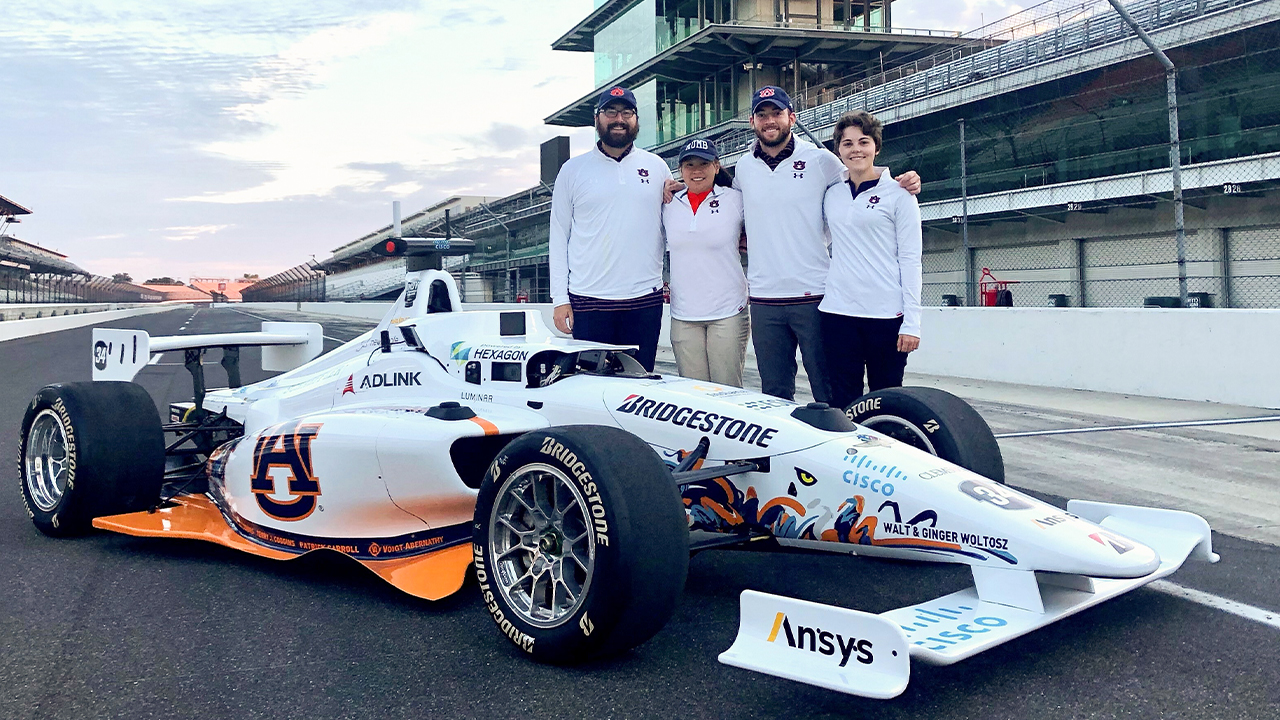Auburn autonomous racing team makes history at Indianapolis Motor Speedway
Published: Sep 7, 2021 3:00 PM
By Jeremy Henderson
Last month, Auburn Engineering’s world-renowned autonomous vehicle research program literally lapped the competition — and made history in the process.
Comprised of students in Auburn’s GPS and Vehicle Dynamics Lab (GAVLAB), Autonomous Tiger Racing (ATR) was the first to run the Dallara AV-21 autonomous race car around the Indianapolis Motor Speedway (IMS) in preparation for the first-ever Indy Autonomous Challenge on October 23rd.
“Dallara, as an engineering company, has always had a worldwide impact on innovation and technology,” said Stefano DePonti, CEO of Dallara USA. “We know the importance of collaborations with universities in continuing to support and grow innovation. We are pleased to learn about Auburn University’s recent performance achievement at the track and we look forward to seeing the results as other university teams meet the challenge.”
Designed to push the boundaries of autonomous technology, as well as elevate consumer confidence in autonomous vehicles, the Indy Autonomous Challenge will pit teams from around the world head-to-head for 20 laps around the famed 2.5-mile oval at speeds of up to 185 mph.
Top prize? $1 million.
Using LiDAR, GPS-INS, computer vision cameras, radar and other sensors, teams must design a software stack that not only allows an Indy Lights car to travel at race pace but interpret draft influence and the movements of competitors.
Though chase vehicles are employed in testing, cars will soon traverse the track alone. Auburn’s pace was limited in its historic, August 27th outing in order to validate track boundaries and to calibrate its software. That will soon change.
“When we start to get to speeds in excess of 130 mph, then we are in uncharted territory,” said ATR team lead Will Bryan. “We’re looking for how the sensors behave, the quality of the measurements, motion blur in the cameras and lidars. These are higher speeds than many of these sensors have ever been tested with. Then layer in multi-vehicle detection and tracking at high speed — these are the major challenges in front of us.”
David Bevly thinks the team can meet them head-on.
“It was exciting to see Auburn’s software controlling the vehicle completely autonomously to make history at IMS,” said Bevly, Bill and Lana McNair Distinguished Professor and GAVLAB’s founder and co-director. “It was incredible to see how quickly the car reacted compared to our chase vehicle. You could really see the software at work.”
Media Contact: , jdh0123@auburn.edu, 334-844-3591
Autonomous Tiger Racing team members (from left to right) Brendan Schretter, Elizabeth Keefer, Will Bryan and Stephanie Meyer pose with their autonomous vehicle at the Indianapolis Motor Speedway. The team will compete in the first-ever Indy Autonomous Challenge on Oct. 23, 2021.


